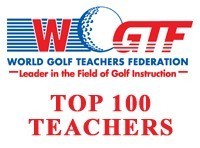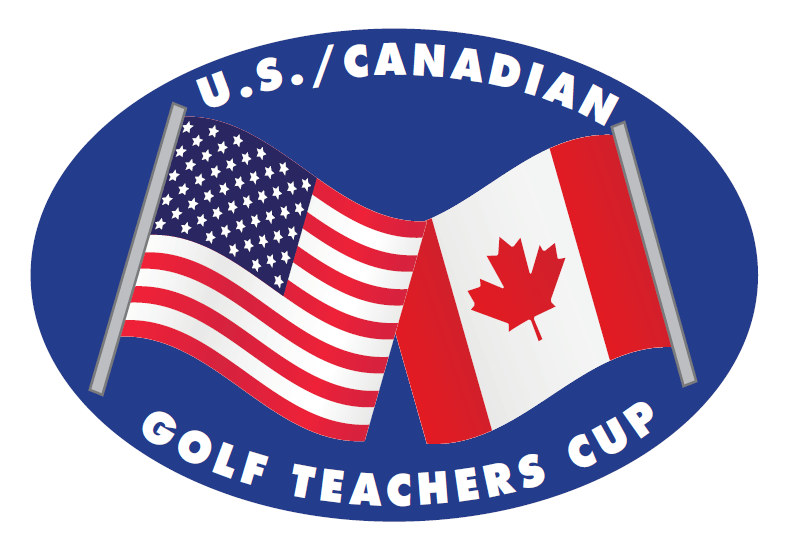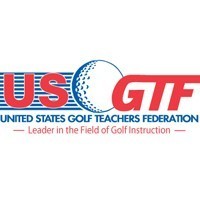Blog
The USGTF and its Global Influence
One of those who took notice did not reside in the USA, but in faraway Timmendorfer-Strand, Germany. His name was Achim Picht, a man who owned a chain of golf schools named AMP Golf. Picht’s schools had locations in both Germany and Spain, and while the schools were successful, his instructors had no certification or formal training of any sort. Picht realized that to fend off the growing competition, he needed to bring some added credibility to his operation.
So in January 1993, a team of examiners led by president Geoff Bryant traveled to Malaga, Spain, to conduct the first USGTF certification class on foreign soil. On the team were Ben Jackson, Mark Harman, Ken Butler and Bob Sprigle, along with staff members Arnold James, Andy Ritondale and Bill Evans, the latter three serving as support for the international mission. The week exceeded everyone’s expectations, concluding with a fabulous dinner up in the mountains of the Costadel Sol.
The course in January was so successful that Picht brought back the USGTF examining team later that September to his home base in Germany, where 22 participants enrolled. That number was astounding, considering at the time the popularity of golf in Germany wasn’t anywhere close to what it is today, with far fewer golf courses. But demand for golf and proper instruction was increasing, and Picht saw that he needed to be a part of it.Picht, one of the pioneers of German golf instruction, passed away several years ago, leaving a legacy that is among the most important for the growth of the game in that country.
Korean Golf Takes World Stage
Many people attribute the proliferation of Korean players on the LPGA Tour to the victory of Se Ri Pak at the 1998 U.S. Women’s Open, but the truth is the seed for success was planted much earlier. Beginning with the very first classes held in 1989, Koreans were a large presence at USGTF certification classes. It was not uncommon to see, out of 50 total participants, 10-20 from Korea. Some resided in the USA, but many returned home to teach the game to a new generation eager to learn. Pak’s victory only continued a trend that was started by these early pioneers with the help of the USGTF. It’s safe to say that even had Pak not won, there would still be a large Korean presence in the women’s game today, thanks to those who saw the value of USGTF certification in helping them grow the game in their native country.
Prior to the USGTF’s existence, teaching golf in Korea was largely the domain of the club professionals in that country at the relatively few courses at the time. The game was exclusionary, as only those who had ample financial resources could play or afford lessons. With the arrival of these new Korean USGTF members who set up teaching operations wherever they could, a completely different audience was reached. Junior golfers who showed promise were allowed access to courses, with most of them having been taught by USGTF members.
It eventually became obvious that Korea needed its own golf teaching federation, and Sammy Oh took the reins. He oversaw the growth of his fledgling association, and needed the assistance of the USGTF examining team to initially handle the instruction. The first class he conducted saw over200 participants, all eager to learn and promote the game. Oh has since retired, and today Brandon Lee has capably taken over as president of USGTF-Korea.
In the United States, Man Kim, then from San Jose, California, attended a USGTF certification class at Adobe Creek Golf Course in Petaluma, California, in the mid-1990s. Instead of returning to Korea, he stayed in the USA and taught his young daughter the game with the principles he learned from the USGTF. His daughter was Christina, and Christina Kim turned out to be one of the most prominent U.S. Players during her career on the LPGA Tour, where she still plays today. She attended the 2015 World Golf Teachers Cup as a spectator, saying hello to many USGTF and WGTF members and impressing everyone with her graciousness.
A Worldwide Influence
In 1997, the inaugural World Golf Teachers Cup was held in Naples, Florida, with participants from several different nations. The tournament was the first that brought international teaching professionals together from multiple nations to represent their countries, and still today it’s unique among competitions. The second World Cup was held in Spain in 1998. Golf has always been healthy in the United Kingdom, and continental Europe continues to see more of its players and teachers play an international role.
Canada saw its first certification class held in 1994 at Upper Canada Golf Course in Morrisburg, Ontario. Since that time, first Bob Bryant and now Marc Ray have served as presidents of the Canadian Golf Teachers Federation, and its members have made a lasting impact in teaching the game in that country. In Australia, Gary Cooney has ably led the Australian Golf Teachers Federation for a number of years, helping to promote the game in the Land Down Under.
Golf in Brazil became a focus with the inclusion of the sport in the Olympic Games in 2016, but prior to that in 2005, Sao Jose Golf Club just outside Sao Paolo hosted the 7th biennial World Golf Teachers Cup. Despite the game being still a relatively minor sport in South America, 88 players teed it up in February of that year for individual and team honors.
China became the first Asian nation to host the World Golf Teachers Cup in 2013, and the event was a rousing success. That country is currently facing some adversity in golf with the state-ordered closings of several golf courses, but USGTF-China is successfully meeting those challenges with Steve Mak at the helm.
Golf has seen tremendous growth inter-nationally the past three decades, and the USGTF has been there, serving to train and certify the instructors who have been instrumental in this growth. The future of the game certainly looks bright, no matter what language you may speak.
Regional Events
Earlier in April, the Masters golf tournament was contested. For many people in the United States, it symbolizes the official start of the golf season. In the colder parts of the nation – especially those of us in the Midwest or further north – the season is beginning to kick off. With the excitement of a new golf season building, it is time to start planning your calendar for events.
First and foremost, you should plan an October trip to the United States Golf Teachers Cup, which will combine with the Canadian Golf Teachers Cup in Niagara Falls, Ontario. Other golfers might also plan on trying to qualify for the U.S. Open, Senior U.S. Open, Monday qualifiers for Web.com events or other tournaments. One opportunity often overlooked is playing in the USGTF regional events.
Regional events are great for a number of reasons. It’s an opportunity to work on your tournament game. Meeting fellow USGTF members who are somewhat local to your area is a great networking avenue. One of my favorite things about these events is the “teaching talk.” There is a lot of knowledge sharing amongst members, and it’s a great way to learn through experiences both on the course and during the social events.
If you haven’t played in a regional event, challenge yourself to play in one this year. Take advantage of the networking opportunities and meet new people. It is also a great motivator to work on your game. For more information about regional events, go to www.usgtfmembers.com or call the home office at 1-888-346-3290. I hope to see you at a regional event soon!
The Y Solution
The Y Solution is a new term that I have invented to explain the confluence of three branches as represented by the letter Y: spatial awareness, coherence, and proprioception. Each branch has a unique influence on the game of golf.
Before we begin, let’s define each branch so we can better apply teaching our clients.
SPATIAL AWARENESS is the ability to be aware of oneself in space. It is an organized knowledge of objects in relation to oneself in that given space. Spatial awareness also involves understanding the relationship of these objects when there is a change of position.
PROPRIOCEPTION is the sense of the orientation and relative position of neighboring parts of the body and the strength of effort being employed in movement. The ability to swing a golf club or to catch a ball requires a finely tuned sense of the position of the joints. Proprioception is a ten-dollar word to describe your awareness of how your body is moving based on how the muscles feel.
COHERENCE is an optimal physiological state where your heart, mind and emotions are harmoniously functioning in alignment and cooperation. In my opinion, it is the main branch of the letter Y that supports the other two components.
Now that we have defined the three branches, let’s apply the Y Solution to the game of golf.
Research shows that when we activate the state of coherence, our physiological systems function more efficiently. We experience greater emotional stability, and we also have increased mental clarity and improved cognitive functions. Simply stated, when our mind and emotions, brain and body work in harmony with our heart, we feel better. We care more, and our performance lifts us at work and in our interactions.
We all want players to get their focus and concentration on the target rather than swing thoughts. Spatial awareness, which requires keeping your eyes on the ball when your target is hundreds of yards in the distance, demands the ability to create a clear mental picture. Only then can you make a truly target-oriented swing that has been freed up.
It boils down to this: What a golfer should be seeking to produce is a reflex response to visual, auditory and kinesthetic stimuli (sight, sound and feel). Your brain must operate from the subconscious. Before settling over the ball, you must build a complete picture of your target, including the flagstick, landing area, trajectory and roll. Loading the wrong software is done by picturing a bad shot.
The best way to enhance proprioception is through targeted exercises and golf drills. It is vital that we as golf instructors identify exercises and golf drills that are player-specific to the issues that we want to work on. For example, we want to improve overall hip rotation to enhance proper slotting in the plane to avoid the over-the-top swing fault. When the player understands and feels the relationship of where the body must be in relationship to the club, we will see proprioception at work.
Next time you see your client holding a golf club at the setup position, think of the Y Solution.
Passing The Torch
I never saw my Pop play a round of golf. I saw him hit a golf ball only once in my life. He hit a left-handed persimmon wood about 250 yards with a draw. Although he followed me while I played, or caddied for me many times, I never saw him hit another golf ball again. Pop still smiles when I tell him about my golf and loves to hear about my son’s (his grandson’s) golfing achievements.
When Pop was with me on the golf course, he was always supportive. He knew the difficulties of the game of golf. I think he saw golf as a parallel to life. When I wanted to turn pro, he immediately said, go do it. Never once did he question my decision to choose golf. He saw many of my ups and downs. He always encouraged me to continue. When I told him I was going to Europe to play professionally, he said to go chase the dream. I never saw Pop outwardly worry about anything. As a man of great faith, he always believed in try to do your best and things will work themselves out.
Pop had two sports figures that he always admired: Ted Williams and Arnold Palmer. Arnold Palmer was the same age, height, and weight as Pop. Pop liked Arnold’s strength and grit. Mr. Palmer always conducted himself with grace and class. He was a fierce competitor, but he treated people with respect and dignity that they deserved. He transformed and inspired generations of people.
Pop admired Ted Williams’ work ethic and skill. The “Splendid Splinter” went on to lifetime batting average of .344. He was the last Major League player to bat over .400 in a season. Like many men of his generation, Ted Williams was a veteran. He willingly served his country, twice sacrificing prime years of his baseball career.
Pop, Ted, and Arnold were similar men. They dealt with life’s ups and downs. Each paving their way to be true heroes in their own right. They were a generation of men that should not be forgotten.
One of my fondest memories with Pop was a U.S. Open qualifier a few years back. I was playing well. The final hole was a real tight par four that I had previously struggled with the tee shot. I glanced over to him, and he had a look of serenity on his face. I hit a perfect tee shot followed by a wedge to 15 feet. After the birdie putt dropped, Pop said, “I always knew you were going to make it.” I shot 67 that round. I felt like I really made him proud. Unfortunately, I missed out of going to the Big Show by one shot. On the ride home, I bought Pop a Budweiser. Sitting there, he looked at me said, “I know you will get them next time.” Later in life, I realized that I made him proud just by simply having the courage and grit to chase my dreams.
Thanks to the “Greatest Generation,” I will always be a fan of Ted’s Tribe, Arnie’s Army, and Pop’s Platoon. They taught us to fight and persevere. But it didn’t end there. They taught us to love, respect, and use your wits to continually move forward to the future.
Pop, I promise to teach my son to work hard and birdie the next hole!
Common Sense Course Management
“I wanted a shorter third shot into the green,” I replied. I had attempted a risky second shot over a waste area on the par-5 13th hole at Shalimar Pointe Golf Club, and was successful in pulling it off, although barely. It gave me an80-yard sand wedge approach to the back pin location, where if I laid up, I would have had about 130 yards left.
“Well, that wasn’t a smart shot,” Pate told me. “You had to hit it perfectly to clear that waste area, and suppose you just missed it. You would have been in that waste area and probably in a lot of trouble.” The waste area back then had a lot of pampas grass bushes and other nasty stuff in it.
“Look, the bottom line is it was going to take you two more shots to hit the green,” he continued. “You have to make sure you have the second shot.”
You have to make sure you have the second shot. No bit of advice on how to play the game has resonated more with me in my long teaching and playing career. It led to my deep interest with course management and how to best make your way around the layout. From what Pate told me, I came up with two absolute tenets of course management that I follow to this day: 1) Never plan your strategy based on having to hit a perfect shot, unless absolutely necessary; 2) plan to avoid the worst trouble.
There are two holes at Boulder Creek Golf Club in Boulder City, Nevada, where we just finished the U.S. and World Golf Teachers Cups, that are perfect examples of course management choices. The first is the second hole on the Coyote Run nine, and the other is the ninth hole, also on Coyote Run. Both holes are par-4s and have split fairways, or two different fairways. On both holes, the left fairway option is riskier but offers a much shorter second shot than does the right fairway.
The second hole has a large fairway bunker that, as measured on Google Earth, takes 228 yards to clear from the tees we played. If successful, the player has a fairway that is 44yards wide awaiting him. If a player cannot clear the bunker, which I can’t, the choices are to play out to the wide part of the fairway right of the bunker, which is 42 yards across, or play down the left side, which is only 24 yards wide and narrows to 12 yards wide with other bunkers coming into play. On all four days of the tournaments, I hit a 3-wood into the wide part of the fairway. I made two pars and two birdies doing so.
I did see a few of my playing partners go left of the bunker into the narrower fairway, even though they couldn’t clear the big bunker. A couple of times they were successful and went through the 12-yard-wide gap, leaving them with flip wedges into the green, whereas I had 6-, 7- and 8-irons. However, how many times are you going to hit a 12-yard-wide gap with a full driver? Not many. I mean, if you have the confidence to hit such a small gap with your driver, fine, but I don’t understand that play at all, to be honest. As for the others who didn’t make the gap? Most of them wound up with difficult bunker shots.
The ninth hole at Coyote Run is somewhat the same but offers one big difference: The riskier fairway is somewhat wider than the one on the second hole. The left fairway on the ninth has a creek running down both sides with a pond 260 yards off the tee on the left-hand side. Short of the pond, the fairway is 48 yards across, while at the pond and beyond it narrows to 35 yards. These seem like generous yardages, but the problem is the fairway is diagonal from left to right, so the playing width is less from a practical standpoint. The fairway is extremely wide going down the right-hand side with an actual and practical width of 45 yards. However, taking this option leaves a much longer second shot into the green, and the difference is dramatic: A long iron or hybrid vs. A short iron, in my case. And I’m sure other competitors faced the same choice.
So in this case, going down the left fairway is well worth the risk, because while I don’t have any analytics to back this up, I think in the long run a player’s scoring average will be less. In my case, again all four days I went down the wider right fairway. I made three pars and a bogey.
Why did I not go left? For me, when I have severe trouble awaiting me on both sides on a long shot, it creates too much pressure to allow me to confidently hit a shot. Going down the right fairway was the correct option for me, even if it meant a hybrid second shot, and that’s okay. The green was relatively large with not much real trouble around it. I reasoned the worst I could make was bogey going this way, whereas if I went left, bogey might be the best I could make.
All of this applies to other areas in course management, including approach shots. One of the worst things to do is short-side yourself, or missing the green on the same side where the hole location is. You won’t have much green to work with, so it’s better to miss to the wider side if you’re going to miss the shot. On short irons, it’s okay to fire right at the flag, but with medium irons and longer, I like to just hit into an area between the flagstick and the wider edge of the green. For example, if the pin is on the right side of the green and I have a 5-iron approach, I will aim for the general area between the flagstick and the left edge of the green.
If a pin is up front on longer approaches, most players, including accomplished ones, will do well to take enough club to reach the middle of the green. That way, if the shot is mis-struck, it will still probably be pin-high, or relatively close.
If you think I favor a conservative game plan, you’re correct. I believe most shots are lost, not because the player failed to play great, but because they failed to not play poorly. That doesn’t mean playing scared or playing not to lose, far from it. There are plenty of opportunities on most courses to play aggressively with little or no risk, and those opportunities should be taken advantage of. But when there is risk, it must be weighed and dealt with accordingly.
Alan Pate made a huge difference in how I approach the game. I’m happy to pass on his wisdom, and I hope you and your students can benefit from his kindness to a then-new golf professional.








